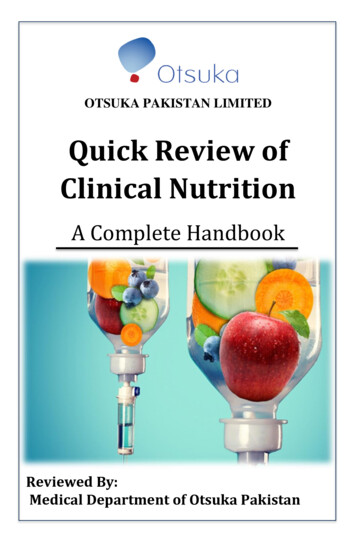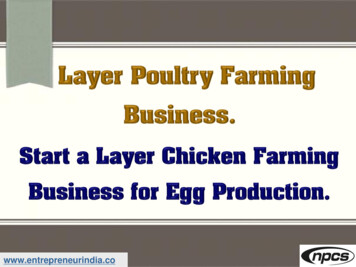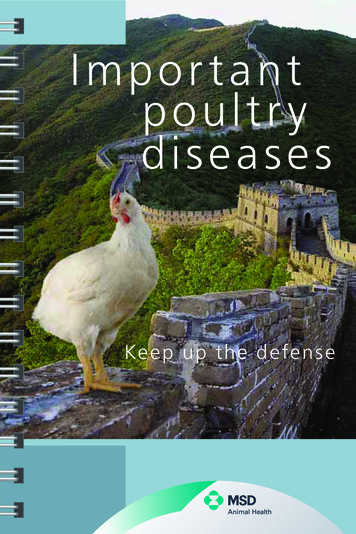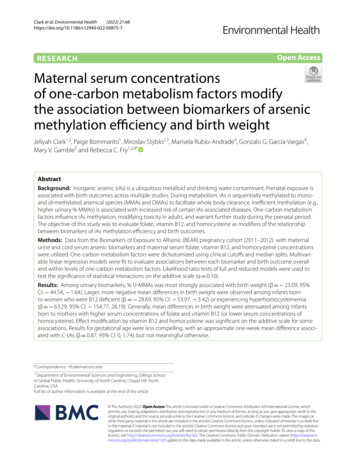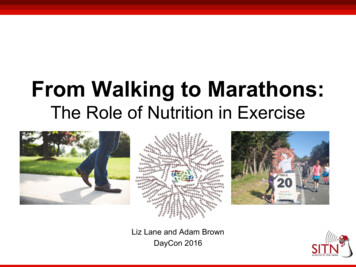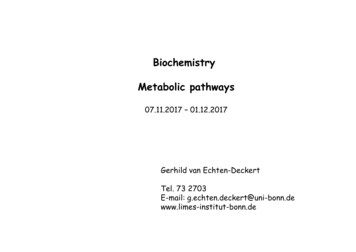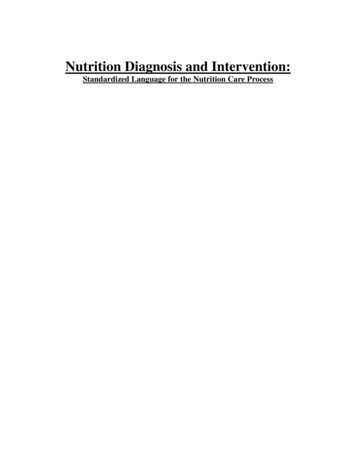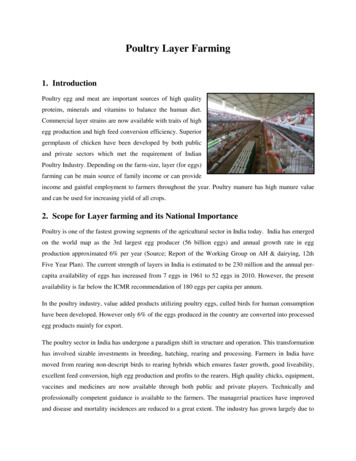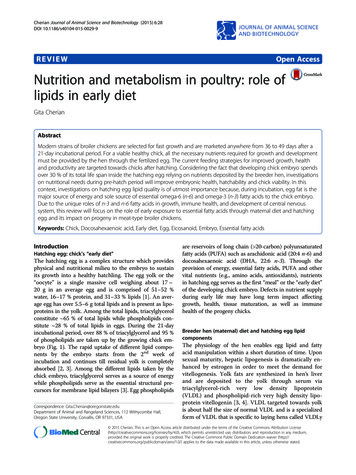
Transcription
Cherian Journal of Animal Science and Biotechnology (2015) 6:28DOI 10.1186/s40104-015-0029-9JOURNAL OF ANIMAL SCIENCEAND BIOTECHNOLOGYREVIEWOpen AccessNutrition and metabolism in poultry: role oflipids in early dietGita CherianAbstractModern strains of broiler chickens are selected for fast growth and are marketed anywhere from 36 to 49 days after a21-day incubational period. For a viable healthy chick, all the necessary nutrients required for growth and developmentmust be provided by the hen through the fertilized egg. The current feeding strategies for improved growth, healthand productivity are targeted towards chicks after hatching. Considering the fact that developing chick embryo spendsover 30 % of its total life span inside the hatching egg relying on nutrients deposited by the breeder hen, investigationson nutritional needs during pre-hatch period will improve embryonic health, hatchability and chick viability. In thiscontext, investigations on hatching egg lipid quality is of utmost importance because, during incubation, egg fat is themajor source of energy and sole source of essential omega-6 (n-6) and omega-3 (n-3) fatty acids to the chick embryo.Due to the unique roles of n-3 and n-6 fatty acids in growth, immune health, and development of central nervoussystem, this review will focus on the role of early exposure to essential fatty acids through maternal diet and hatchingegg and its impact on progeny in meat-type broiler chickens.Keywords: Chick, Docosahexaenoic acid, Early diet, Egg, Eicosanoid, Embryo, Essential fatty acidsIntroductionHatching egg: chick’s “early diet”The hatching egg is a complex structure which providesphysical and nutritional milieu to the embryo to sustainits growth into a healthy hatchling. The egg yolk or the“oocyte” is a single massive cell weighing about 17 20 g in an average egg and is comprised of 51–52 %water, 16–17 % protein, and 31–33 % lipids [1]. An average egg has over 5.5–6 g total lipids and is present as lipoproteins in the yolk. Among the total lipids, triacylglycerolconstitute 65 % of total lipids while phospholipids constitute 28 % of total lipids in eggs. During the 21-dayincubational period, over 88 % of triacylglycerol and 95 %of phospholipids are taken up by the growing chick embryo (Fig. 1). The rapid uptake of different lipid components by the embryo starts from the 2nd week ofincubation and continues till residual yolk is completelyabsorbed [2, 3]. Among the different lipids taken by thechick embryo, triacylglycerol serves as a source of energywhile phospholipids serve as the essential structural precursors for membrane lipid bilayers [3]. Egg phospholipidsCorrespondence: Gita.Cherian@oregonstate.eduDepartment of Animal and Rangeland Sciences, 112 Withycombe Hall,Oregon State University, Corvallis, OR 97331, USAare reservoirs of long chain ( 20-carbon) polyunsaturatedfatty acids (PUFA) such as arachidonic acid (20:4 n-6) anddocosahexaenoic acid (DHA, 22:6 n-3). Through theprovision of energy, essential fatty acids, PUFA and othervital nutrients (e.g., amino acids, antioxidants), nutrientsin hatching egg serves as the first “meal” or the “early diet”of the developing chick embryo. Defects in nutrient supplyduring early life may have long term impact affectinggrowth, health, tissue maturation, as well as immunehealth of the progeny chicks.Breeder hen (maternal) diet and hatching egg lipidcomponentsThe physiology of the hen enables egg lipid and fattyacid manipulation within a short duration of time. Uponsexual maturity, hepatic lipogenesis is dramatically enhanced by estrogen in order to meet the demand forvitellogenesis. Yolk fats are synthesized in hen’s liverand are deposited to the yolk through serum viatriacylglycerol-rich very low density lipoprotein(VLDL) and phospholipid-rich very high density lipoprotein vitellogenin [3, 4]. VLDL targeted towards yolkis about half the size of normal VLDL and is a specializedform of VLDL that is specific to laying hens call
metabolism of n-3 and n-6 fatty acids in the hen diet and hatching egg is of particular interest and importance because of the actions of PUFA-derived metabolites (e.g., eicosanoids) in many biological processes in the hen and in the developing chick embryo and is explained else-where in this review. In ovo nutrition through hatching eggs


